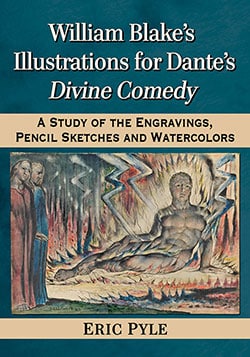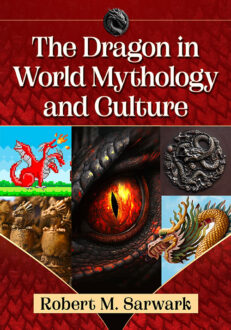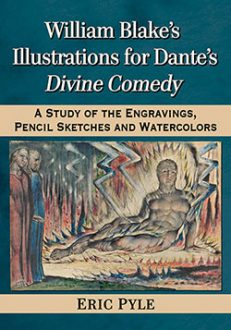William Blake’s Illustrations for Dante’s Divine Comedy
A Study of the Engravings, Pencil Sketches and Watercolors
$49.95
In stock
About the Book
William Blake’s series of illustrations for Dante’s Divine Comedy was his last major project and a summation of his religious and artistic beliefs. Blake intended to engrave this series, but it was unfinished at his death. The series includes seven partially complete engravings and 102 works in various stages of completion—some of the most beautiful pictures of his career. These pictures are not simple illustrations, but constitute a thorough reinterpretation and—in Blake’s view—correction of Dante’s poem.
This book compares the two men’s theological and artistic views and analyzes in detail the meaning of Blake’s illustrations, for the first time introducing their theological and aesthetic exuberance to a modern audience.
About the Author(s)
Bibliographic Details
Eric Pyle
Format: softcover (7 x 10)
Pages: 300
Bibliographic Info: 96 photos (12 in color), notes, bibliography, index
Copyright Date: 2015
pISBN: 978-0-7864-9488-0
eISBN: 978-1-4766-1702-2
Imprint: McFarland
Table of Contents
Table of Contents
Preface 1
Part I: Blake, His Masters and Rivals
1. Why Did Blake Illustrate The Divine Comedy? 3
2. Views of Blake’s Dante, Past and Present 13
Part II: English Dante
3. The Comedy Reaches England 19
4. The Making of Blake’s Illustrations 25
Part III: Blake’s Criticism of Dante
5. Marginal Note to Boyd 29
6. Remarks on the Illustration to Hell, Canto 4 50
7. “He could never have Builded Dantes Hell” 80
8. States, Not People 88
Between pages 122 and 123 are 8 color plates containing 12 photographs
Part IV: The Illustrations
9. Hell 123
10. Purgatory 218
11. Heaven 246
Conclusion 267
Chapter Notes 269
References 277
Index 281
Book Reviews & Awards
“Pyle clearly has an intimate knowledge of the philosophical movements contributing to Blake’s romanticism, as he does with the intricacies of Blake’s own mythological system and the whole of his poetic oeuvre. Indeed, the readings he offers of various works in Blake’s canon are on a par with the most insightful comments he has to offer regarding Blake and Dante.”—Blake: An Illustrated Quarterly.





